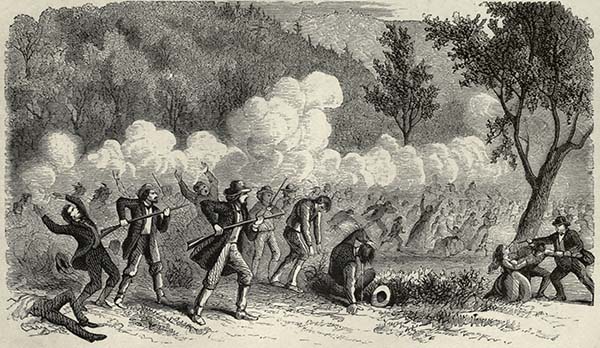The Mormon War, otherwise known as the Utah War or Mormon Rebellion, describes the violence surrounding an armed confrontation between Mormon settlers in Utah Territory and the U.S. Army, which lasts from March 1857 to July 1858. Tensions between followers of the Latter Day Saint movement (Mormons) and Protestant Americans had simmered for two decades, including intense conflicts in the 1838 Mormon War (otherwise known as the Missouri Mormon War, involving David Rice Atchison as a militia general and resulting in the death of the movement's founder, Joseph Smith Jr.) and the 1844-1846 Illinois Mormon War (resulting in the Mormon Exodus to Utah Territory under the leadership of Brigham Young).
In the 1857-1858 Mormon War, President James Buchanan sends U.S. troops to Utah Territory in the so-called "Utah Expedition." The Mormons, fearing violent persecution, arm themselves and occasionally skirmish with U.S. soldiers. No casualties result from battles with the U.S. forces, but in total, approximately 150 people die violently in the conflict, most notably in the Mountain Meadows Massacre, which involves the Mormon slayings of between 100 and 140 migrants of the Baker-Fancher wagon train in southern Utah, between September 7-11, 1857. The various factors and motivations instigating the massacre remain unclear, but it is notable that roughly as many lives were lost in the Mormon War as in the "Bleeding Kansas" era.
Also notable is the apparent involvement of future Missouri bushwhacker and famed raider of Lawrence, Kansas, William Clarke Quantrill. Quantrill goes to Utah in the spring of 1858 to resupply federal forces, and he supposedly befriends Southern-sympathizing guerillas and acquires a taste for banditry, and a year later he returns to Kansas and falls in with Missouri border ruffians.


